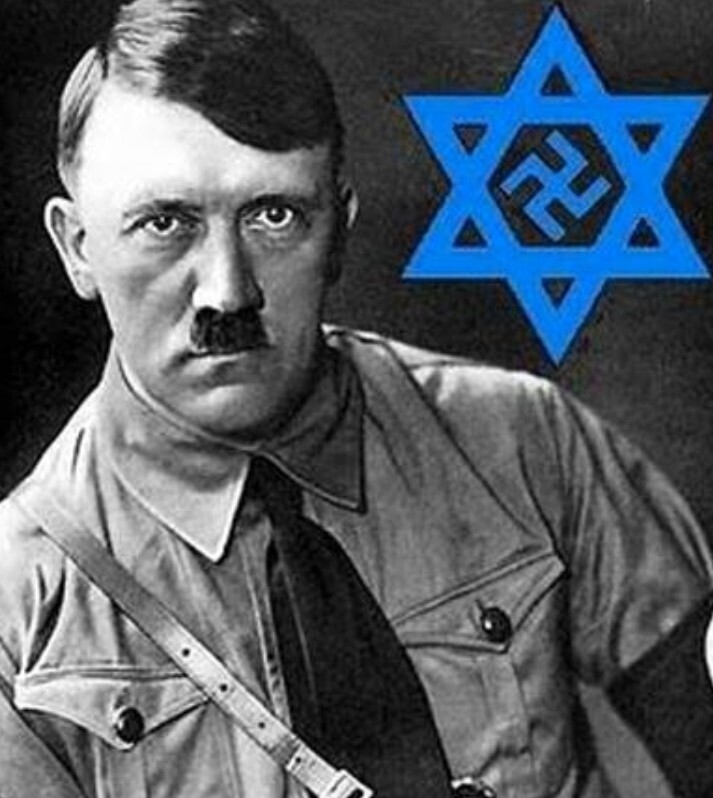Interviewed by the Office of Strategic Services (OSS) during World War II, Ernst Hanfstaengl recounted that Hitler had made it known privately that at Pasewalk he had had a “supernatural vision which commanded him to save his unhappy country. After giving his first speech at the Hofbräukeller for the DAP on October 16, 1919–a year after first having heard the “Voice,” at Pasewalk–the members the Thule Society were so impressed by the oratorical skills of Hitler–a former male prostitute, and failed artist with barely a secondary-school education–that he was received by them as the “messiah” they had been awaiting.
Thule founder Dietrich Eckart (1868 – 1923) had expressed his anticipation of List’s prophecy of a “German Messiah” who would save Germany after World War I in a poem he published in 1919, months before he met Hitler for the first time. When he met Hitler, Eckart was convinced that he had encountered the prophesied redeemer. Eckart refers to Hitler as “the Great One,” “the Nameless One,” “Whom all can sense but no one saw.”[1] Ludendorff “trembled with emotion” when he first heard Hitler.[2]
Several months after the Nazi seizure of power in 1933, Sebottendorf published a book titled Bevor Hitler kam: Urkundliches aus der Friihzeit der nationalsozialistischen Bewegung (“Before Hitler Came: The early years of the Nazi movement,”), where he detailed how the Thule Society was the organ of the Nazi Party:
Thule members were the people to whom Hitler first turned, and who first allied themselves with Hitler. The armament of the coming Führer consisted–besides the Thule Society itself–of the Deutscher Arbeiterverein, founded in the Thule by Brother Karl Harrer at Munich, and the Deutsch-Sozialistische Partei, headed there by Hans Georg Grassinger, whose organ was the Münchener Beobachter, later the Völkischer Beobachter. From these three sources Hitler created the Nationalsozialistische Arbeiterpartei.
According to Hitler biographer Ian Kershaw, the Thule’s “membership list… reads like a Who’s Who of early Nazi sympathizers and leading figures in Munich.”[3] In a book also titled Bevor Hitler Kam (“Before Hitler Came”), Dietrich Bronder alleged that members of the Thule Society included Dietrich Eckart, Gottfried Feder, Hans Frank, Hermann Göring, Karl Haushofer, Rudolf Hess, Heinrich Himmler, and Alfred Rosenberg.
Bronder also noted that among the anti-Semites there were quite a few of Jewish origin, and concluded, from his own research, that among 4000 men of the Nazi leadership there were 120 foreigners by birth, many with one or two parents of foreign origin and one percent even of Jewish descent. Of Jewish descent or related to Jewish families he listed Thule member Rudolf Hess, Gregor Strasser, Josef Goebbels, Heinrich Himmler, Joachim von Ribbentrop, Franz Hanfstaengl, and Aufbau and Thule members Alfred Rosenberg and Karl Haushofer. According to Bronder, Ribbentrop–a protege of Hanfstaengl–also maintained a close friendship with Chaim Weizmann.[4]

Hanfstaengl was intimately associated with Otto Khan and Aleister Crowley’s friend and co-conspirator, Hanns Ewers, who worked the secretive Propaganda Kabinett of Max Warburg’s associate Dr. Bernhard Dernburg, with George Sylvester Viereck and Harvard professor Hugo Münsterberg.[5] Ewers was also an associate of Guido von List Lanz von Liebenfels.[6] Ewers wrote a screenplay about the Nazi martyr Horst Wessel that was produced by Hanfstaengl.
Ludendorff was also friendly with Karl Haushofer (1869 – 1946), whose concept of Geopolitik influenced Hitler’s ideological development.[7] Under the Nuremberg Laws, Haushofer’s wife and children were categorized as Mischlinge, the German legal term used in Nazi Germany to denote persons deemed to have both “Aryan” and Jewish ancestry. His son, Albrecht, was issued a German Blood Certificate through his protégé Rudolf Hess’ help. Albrecht had studied alongside Hess at Munich University. Hess and Albrecht shared an interest in astrology, and Hess also was keen on clairvoyance and the occult.[8]
In 1932, Goebbels pamphlet published to refute certain allegations that his grandmother was Jewish.[9] Gregor Strasser, for many years second only to Hitler in the Nazi Party, had asserted that Goebbels was of Jewish ancestry, citing the club foot as proof.[10] After attending the lectures at University of Heidelberg on the German Romantics from his Jewish professor Friedrich Gundolf, a member of the George-Kreis, Goebbels became completely captivated by the works of the Schlegel brothers, of Tieck, Novalis and Schelling.[11] Goebbels sent a letter to Professor Max Freiherr von Waldberg (1858 – 1938), with whom he graduated, reiterating how much he owed to Gundolf.[12] Goebbels’s first love, Anka Helhom, often showed her friends a book with his personal inscription on it, the Buch der Lieder, by Heinrich Heine. In the summer of 1922, he began a love affair with Else Janke, a schoolteacher. After she revealed to him that she was half-Jewish, according to Goebbels the “enchantment [was] ruined.”[13] Nevertheless, he continued to see her on and off until 1927.[14]
A prominent member of the Nazi Party, Goebbels’s wife Magda was a close ally, companion and political supporter of Adolf Hitler.
When she was eight-years-old, Magda’s mother married Jewish businessman and leather-goods magnate Richard Friedländer and moved with him to Brussels in 1908. Friedländer’s residency card, found in Berlin archives, stated that Magda was his biological daughter.[15]
The family moved to Berlin, where Magda eventually met the Zionist Chaim Arlosoroff (1899 – 1933).
During their relationship, she briefly wore a Star of David he had given her and accompanied him to Zionist meetings. Magda continued to carry on the affair, even after she married Dr Günther Quandt, a successful industrialist. By the time she had divorced Quandt, Chaim had had left for Palestine to join the Jewish Agency and work for the establishment of a state of Israel.[16] Magda later married Goebbels in 1931, with Hitler as his best man. Friedländer was later killed in the Buchenwald concentration camp.










Nah that is not it. It is: Kabbalistic though but it is really Ptolemy (~sounds like Jew) of the ancient Greek kingdom of Macedon.
The Ptolemaic dynasty; the Greek. They trashed the Egyptian Old religion and imposed their Hellenistic one.
Kabbalah the word is out of Aramaic and the meaning of the word is
acceptance and receiving the spoken mystery (of the Sphinx) without any objection.
Sphinx – a winged monster of Thebes, having a woman’s head and a lion’s body (Half man half animal). It propounded a riddle about the three ages of man, killing those who failed to solve it, until Oedipus (Greek) was successful, whereupon the Sphinx committed suicide.
And the Bible is a compendium of books, and it is mostly out of old Gnostic text, written in Greek then translated into Aramaic (And Hebrew is a dialect of Aramaic) and back to Greek. I only see the new testament and the super Hero Jesus, that is the person to be like and to act like, as far as a human can go. (It is spiritualism, the most pure.)
The Nazi swastika is in motion and it is a of the woman kind of a SUN symbol, could mean the new age of Horus, then they also had the Black SUN which is Saturn, Saturnalia. In Kabbalah you can exchange the SUN for Saturn or vice versa.
What I thought was the case is that them Germans had gone above the Earth’s Magnetosphere and discovered that our SUN is DARK, it is only when the Sun’s rays hit the Earth’s Magnetosphere that we can see that as light (induction through media).
Germany at the time was the most technological advanced Nation.
They where something new. (out of the old)
The three ages of man, You know that you can construct the star of Remphan with 3 Hourglasses (Time-glasses)?
What is the star of Remphan mentioned in Acts 7:43?
https://www.gotquestions.org/star-of-Rephan.html
It seems the Babylonians worshiped a god of their own imagination and named him “Kiyun,” whose place in the heavens was as a “wandering star” that they also named “Kiyun” after their god. All the ancient peoples had observed that some stars—in actuality planets—moved through the sky, while other stars—the genuine stars—were fixed. (The Greek term asteres planētai, shortened to just planētai, meant “wandering stars.”) The ancients made no distinction between stars and planets; to them, they were all stars of some type. Thus, Saturn was considered a “star,” and the deity associated with him was a “star-god.”